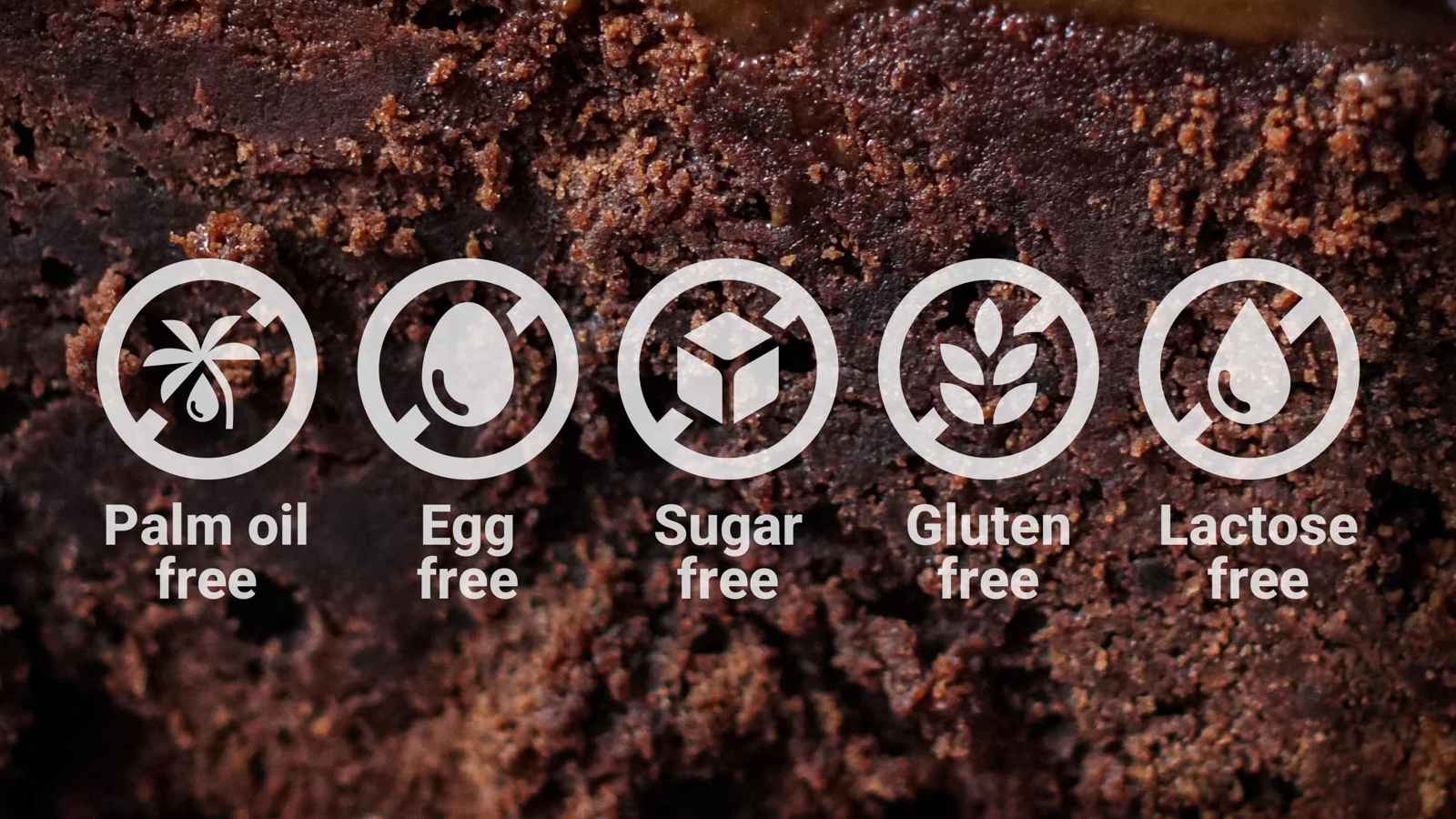
Free-from foods texture measurement
Learn how to reformulate free-from products with texture optimisation as a priority.

Why free-from foods matter
The rise of food allergies, intolerances, health, and environmental awareness is driving rapid growth in free-from food markets. Consumers expect free-from options – gluten-free, egg-free, dairy-free, or palm-oil-free – to deliver not only safety but also great taste and texture.
Key challenges for manufacturers:
- Sourcing natural, allergen-free ingredients sustainably
- Retaining appealing flavour and mouthfeel despite ingredient restrictions
- Using innovative processing and formulation technologies to mimic traditional textures
Texture challenges associated with free-from foods
Gluten-free
- Gluten removal often leads to dry, crumbly, or gritty products
- Reduced volume, uneven crumb, and shorter shelf life are common
- Modern alternatives (starches, proteins, hydrocolloids) help restore elasticity, chewiness, volume, and softness
- Texture is crucial to meet coeliac and health-conscious consumer expectations
Egg-free
- Eggs provide emulsification, binding, lift, and foam stability
- Replacements (e.g., aquafaba, plant-based fats) affect softness, volume, crunch, and chew
- Texture control is vital for cakes, meringues, biscuits, and creamy fillings
- Thorough testing ensures consumer appeal and repeat purchase
Dairy-free
- Plant-based dairy alternatives often differ in texture and flavour from original
- Innovations like plant-protein micelles recreate creamy, smooth mouthfeel of dairy
- Ice cream, cheese, sour cream, and yogurts are benefiting from texture-focused R&D
- Texture analysis guides refining blends and production steps
Palm oil-free
- Palm oil substitutes affect moisture, fat content, and emulsification
- Texture testing compares reformulated foods to originals ensuring similar mouthfeel and stability
- Sustainable, health-conscious reformulations require close sensory control
How texture analysis accelerates free-from food innovation
Objective, consistent texture measurement is key to successful reformulation:
- Quantify crispiness/fracturability of crusty rolls, springiness and softness/firmness of cakes and muffins, and stickiness of pasta
- Compare free-from products to traditional “gold standards”
- Inform ingredient substitutions and processing adjustments rapidly
- Maintain high quality that meets consumer expectations
- Assess competitive manufacturers to develop technically superior products
Using a Texture Analyser, you can apply multiple tests – compression, tension, extrusion, bending, cutting – to assess and improve texture properties in every product iteration.
Tools and testing solutions for free-from foods
- A range of Texture Analysers to match your force and size needs
- Wide selection of probes and attachments, including Ottawa Cells, bending rigs, back extrusion, and penetration probes
Applications in bakery, snacks, and dairy alternatives.
Learn from free-from food texture research
There are countless research publications in both academic and industrial settings that use the Texture Analyser as a tool to assess the effects on texture of free-from products. Some examples of the most recent research are listed below.
Free-from research in the bakery industry
- Selection of appropriate hydrocolloid for eggless cakes containing chubak root extract using multiple criteria decision-making approach
- Effect of whey protein and mixed flours on the quality parameters of gluten-free breads
- Gluten-free bakery products: Cookies made from different Vicia faba bean varieties
- Sustainable and regional gastronomy: cassava leaves as a potential ingredient for gluten-free biscuits (PDF)
- Influence of almond and coconut flours on Ketogenic, Gluten-Free cupcakes
Free-from research in the pasta industry
- Relationship of Compositional, Mechanical, and Textural Properties of Gluten-Free Pasta Using Different Quinoa (Chenopodium quinoa) Varieties (PDF)
- Physicochemical, Sensory, and Cooking Qualities of Gluten-free Pasta Enriched with Indonesian Edible Red Seaweed (Kappaphycus Alvarezii)
- Evaluation of Amaranth Flour Processing for Noodle Making
- A new gluten‐free product: Brown rice bulgur, and its physical and chemical properties
Free-from research in the dairy industry
- Composition and physicochemical properties of commercial plant-based block-style products as alternatives to cheese
- The Application of Pulse Flours in the Development of Plant-Based Cheese Analogues: Proximate Composition, Color, and Texture Properties (PDF)
- Use of hydrocolloids and vegetable oils for the formulation of a butter replacer: Optimization and oxidative stability
Getting ahead in the free-from food development market
Creating free-from products that delight consumers with appealing, familiar textures is essential for success. As the market expands, innovation and fast, precise texture measurement separate leaders from followers.
Texture analysis is your R&D and QC foundation – make it part of your formulation process to ensure products that perform, sell, and satisfy.
- Discover Low-in Foods testing options for salt, sugar and fat reduction projects.


